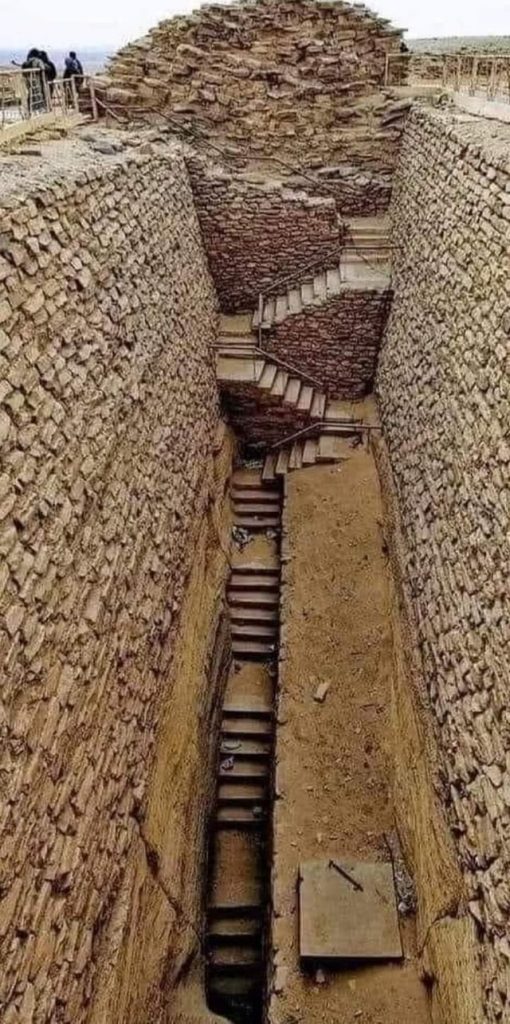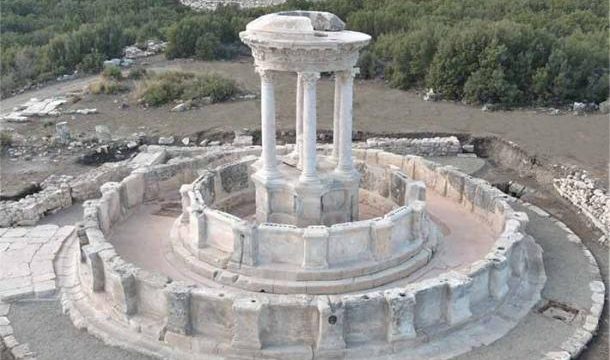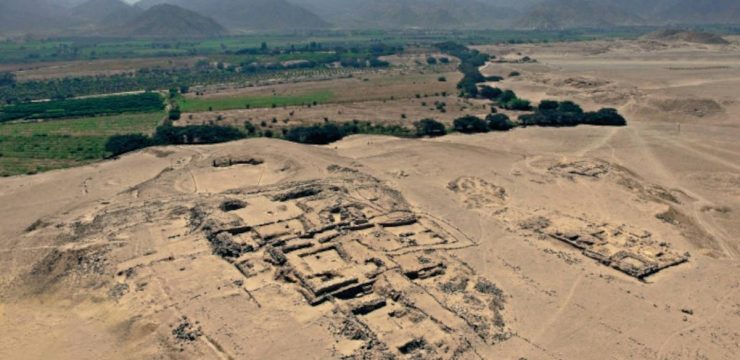In the heart of the sun-drenched desert of Saqqara, Egypt, stands a structure that has captivated historians, architects, and spiritual seekers for thousands of years. The Stepped Pyramid, built more than 4,700 years ago, is far more than an ancient relic. It is a symbol of early human brilliance, an enduring monument to the strength of belief, and a physical representation of one man’s extraordinary vision that changed the course of history. Rising from the sands like a stone staircase to the heavens, the pyramid remains one of the most important and awe-inspiring achievements of the ancient world.

Before this towering marvel existed, ancient Egyptian tombs were modest, flat-roofed structures called mastabas. They were practical and functional, serving as burial places for the elite, but they lacked the grandeur and symbolic power of what was to come. That all changed during the reign of Pharaoh Djoser, a ruler of Egypt’s Third Dynasty. Djoser, ambitious and forward-thinking, envisioned something far greater than tradition had ever allowed. To bring this vision to life, he turned to a man who would become one of the most influential figures in architectural history: Imhotep. Imhotep, a polymath who served as Djoser’s chief advisor and high priest, was unlike anyone else of his time. His innovative thinking and understanding of stone construction led to the birth of Egypt’s first pyramid—and the world’s first monumental stone structure.
The pyramid Imhotep designed was not simply a place to house the Pharaoh’s remains. It was a bold expression of both technological mastery and profound spiritual belief. With six distinct levels rising in precise geometric form, the structure represented a radical departure from earlier funerary architecture. For Djoser and his people, this pyramid was a sacred vessel, designed to assist the king in his transition from mortal ruler to divine being. The southern staircase of the pyramid, in particular, played a crucial symbolic role. It was more than just a passageway; it was a metaphorical path toward the divine, where each ascending step brought the Pharaoh closer to the gods. The ancient Egyptians believed in an eternal life beyond death, and the pyramid embodied that belief in solid stone.
Constructing the Stepped Pyramid was an extraordinary feat of engineering. Each limestone block had to be quarried, shaped, transported, and placed with meticulous care. The organization required to mobilize laborers, artisans, and tools on such a massive scale was unprecedented at the time. Yet under Imhotep’s guidance, the Egyptians accomplished what many believed to be impossible. The pyramid, originally standing about 204 feet tall, towered above the desert landscape, proclaiming the Pharaoh’s power and divine connection for all to see. It was a message not only to the people of Egypt but to eternity itself: their king was more than a man—he was destined to live among the gods.
Every element of the pyramid’s construction held meaning. The six-layered structure was carefully calculated to represent the Pharaoh’s journey through different stages of spiritual evolution. The pyramid’s orientation, materials, and proportions were all intentional, designed to harmonize with the sun, stars, and the afterlife. The southern staircase, leading to the mortuary temple, marked a sacred threshold. It symbolized the crossing from the world of the living into the eternal sanctuary of the divine. Imhotep’s use of stone—a material previously reserved for small religious artifacts—represented a philosophical shift. He saw stone not just as a building material, but as a language. Through it, he expressed themes of resurrection, permanence, and cosmic order.
Imhotep’s work on the Stepped Pyramid left an imprint on Egyptian culture that lasted for millennia. His pioneering use of cut stone and structured tiers influenced the design of all subsequent pyramids, including the iconic pyramids of Giza. The Stepped Pyramid laid the foundation—literally and figuratively—for a new architectural tradition that would define Egypt’s identity in the eyes of the world. Yet Imhotep’s contributions went beyond construction. Over time, he was deified, becoming a god of wisdom and healing. Rare in Egyptian history, a commoner who rose to such divine status spoke to the power of his intellect and vision. For centuries after his death, people prayed to Imhotep, not just as the Pharaoh’s architect but as a divine intermediary capable of curing illnesses and guiding souls.
What makes the Stepped Pyramid truly timeless is not just its size or complexity but the message it carries. It represents the human desire to connect with the infinite, to seek meaning beyond the material world. Though built for one man, it speaks to a collective aspiration—to defy death, to touch the stars, and to leave behind something that endures. The pyramid’s stones, weathered by centuries of wind and sand, still carry whispers of a civilization that believed in the power of spirit and the permanence of legacy. In many ways, it is not just Djoser who achieved immortality, but also the workers, artists, and visionaries like Imhotep who dared to reshape the boundaries of what was possible.
Today, visitors to Saqqara walk among the ruins of this sacred complex and stand in the shadow of a structure that continues to inspire wonder. The Stepped Pyramid does not merely remind us of a long-lost past—it invites us to imagine, to dream, and to create. It is a monument not just to a Pharaoh or a civilization, but to the enduring brilliance of the human spirit. From the foundation stones to the highest tier, the pyramid speaks a language understood across cultures and centuries: a language of ambition, faith, and the desire to be remembered.
In those ancient, sunlit steps, we find more than history—we find the soul of humanity reaching beyond the horizon, grasping for eternity.





